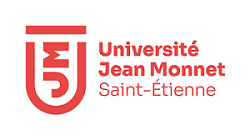Optimization of structural modifications induced in laser-excited bulk transparent materials
Résumé
Ultrafast laser technology has emerged as a feasible tool to perform advanced processing of band-gap materials for potential applications in optics and photonics. The strong nonlinear localization of energy induces refractive index changes that may add specific functions (light guiding, coupling, diffraction, or amplification) to compact, integrated optical devices. Nevertheless, the result of the laser action depends essentially on the nature of the material and may result in specific electronic and structural changes associated with either increasing or decreasing the refractive index under light exposure. Employing real-time phase contrast microscopy we study the formation dynamics and the resultant transient and permanent morphology of laser-induced modifications in bulk dielectric materials in different conditions of irradiation. Several interaction regimes with respect to the input energy dose can be established based on these observations, emphasizing the role of nonlinear pulse propagation and of the intrinsic material properties. Furthermore we will show that using programmable spatio-temporal shaping of the laser pulse we regulate the energy delivery rate, delineate the spatial extent of excitation, and achieve an upgraded degree of controllability of the spatio-temporal characteristics of excitation. The approach is able to influence the balance of the laser-induced sequence of electronic and structural transformations and to define the end result of the laser action. The technique permits to design the nature of the refractive index change so that complex guiding structures can be induced in materials that do not allow it under normal excitation conditions.

